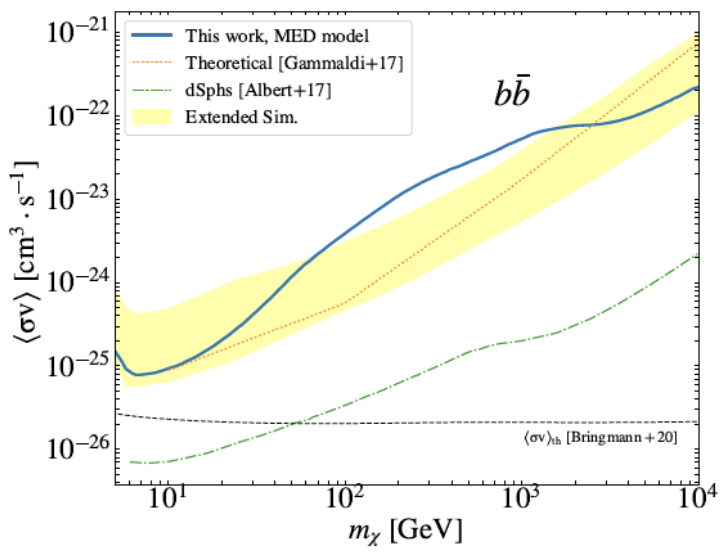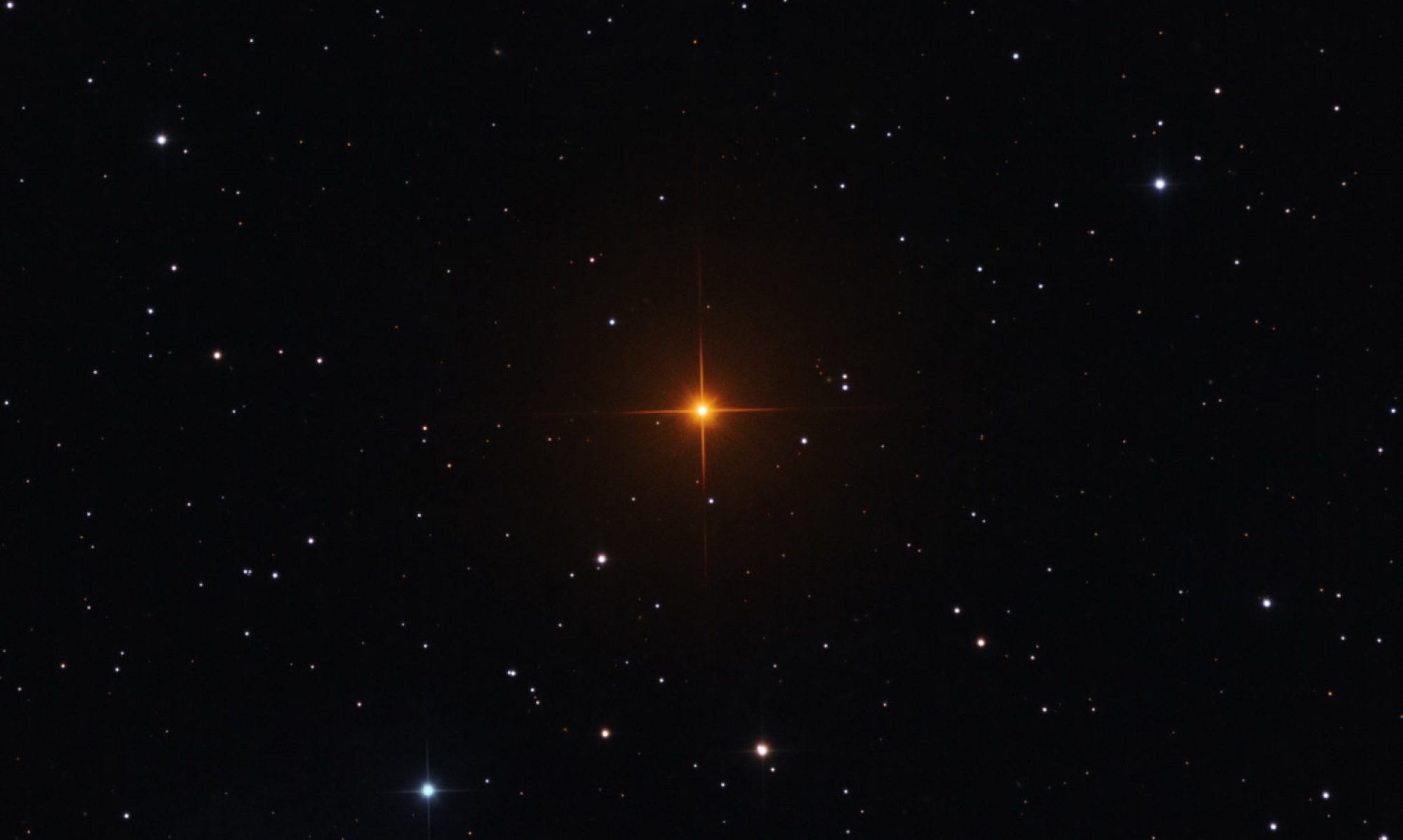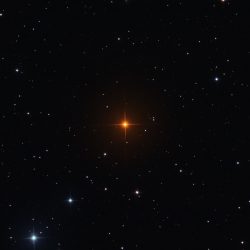
Almost a century ago, first astrophysical hints came to light pointing to the existence of new physics: the gravitational interaction was failed to describe the kinematics of extragalactic objects. The gap between theory and observation could be filled both on astrophysical and cosmological scale, by assuming the existence of a new kind of non-luminous, yet gravitationally-interacting matter, i.e. the Dark Matter (DM). Currently, the abundance of DM has been estimated to be the 27% of the total content of the Universe, although its nature remains still unknown. Among other, the Weakly Interactive Massive Particle (WIMP) represents one plausible candidate beyond the Standard Model (SM) of particle physics. WIMPs particle can annihilate in astrophysical objects producing SM particles, whose decay processes generate secondary fluxes of gamma rays, among others detectable fluxes. Searching for DM hints in secondary fluxes produced in astrophysical sources is what we call indirect searches for DM.
Recently, dwarf irregular galaxies have been proposed as astrophysical targets of interest for indirect searches of DM. In fact, they are DM dominated astrophysical objects, with a negligible astrophysical background in gamma-rays. Nonetheless, dwarf irregular galaxies also represent an interesting laboratory from the point of view of the DM distribution. In fact, although the rotation curves of spiral galaxies have been the first observational evidence of the existence of DM, there is still a lot to learn about the distribution of DM in galaxies. From the benchmark LCDM cosmology and N-body DM-only simulation (N-body DM-only simulation are a good approximation due to the abundance of DM in the Universe – 27% of the total content – with respecto to the visible baryon matter, i.e. stars, gas, etc. – which represent only the 5% of the total content of the Universe), we know that the DM distribution generally follows the well-known Navarro-Frenk-White (NFW) profile, i.e. a profile with a “cusp” in the center of big structures. On the other hand, the experimental data of the rotation curves of smaller objects, point to “core” DM distribution profile. The reason of such a discrepancy is still unknown, and represent the so called “cusp/core problem”, an open question in physics, astrophysics and particle physics. Dwarf irregular galaxies are indeed an example of the objects where the cusp/core problem is observed.
In this work we remain agnostic about the cusp/core problem: we analysed the rotation curves of 7 dwarf irregular galaxies (see e.g. the rotation curve of the IC10 galaxy, Fig. 1).
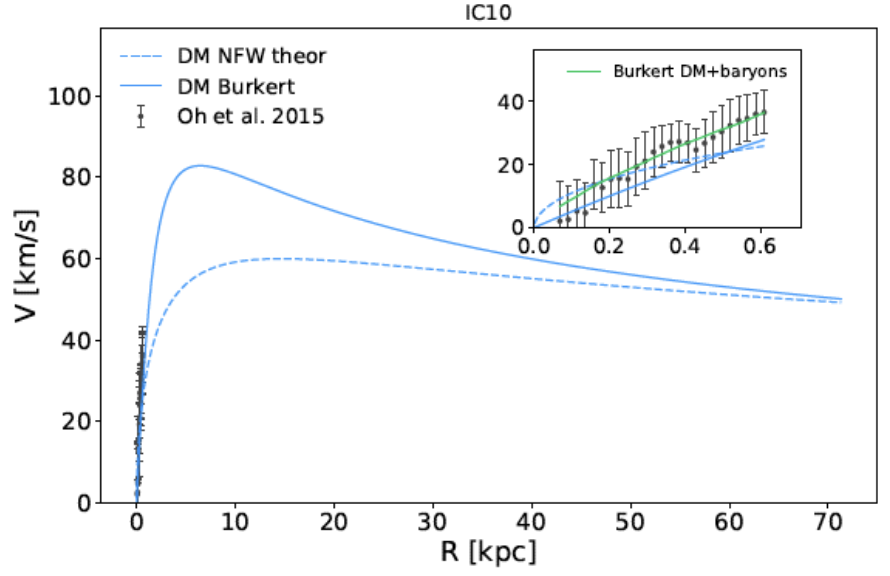
The Burkert core profile (full blue line) corresponds to the best fit of the rotation curves. Instead, the NFW cusp profile has been theoretically constructed, and the corresponding rotation curve has been created and compared with the data. With these two different DM distributions, we have constructed the DM modelling, including the enhancement in the expected gamma-ray flux due to the existence of substructures. Substructures in DM halo are over density, sub clumps in the DM distribution profiles, relics of the bottom-up formation history of the galaxy. Their effect is to enhance the DM annihilation rate, i.e. the gamma-ray production, due to the enhance of the DM density locally. We have created the two-dimensional spacial templete for our targets. In Fig. 2 the spatial template of the IC10 galaxy is shown for four different DM density distribution profiles. Indeed, the MIN model corresponds to a Burket core profile without any substructure, the MED model is the Burkert profile with a medium contribution from substructures. The maximum contribution from substructures has been calculated for both the Burkert core and the cusp NFW profile (respectively, Bur-MAX and NFW-MAX).
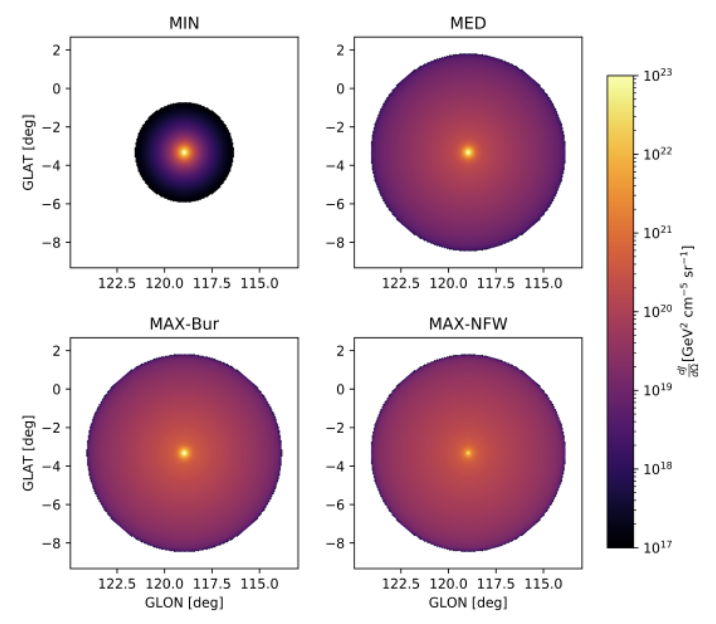
Finally, we have analysed the data of the Fermi Large Area Telescope. We didn’t find any gamma-ray signal from these objects, indeed we can exclude some region of the DM mass and annihilation cross section parameter space. The exclusion limit for the DM mass and annihilation cross-section are presented in Fig. 3. The blue line corresponds to the results of this work for the combined analysis of all the 7 targets with a MED model, i.e. considered as extended sources. These results are compared with the thermally averaged annihilation cross section (dotted black line), the result of the previous proof-of-concepts paper (yellow dashed line), the results of 100 simulation with a null signal from DM (yellow band) and the exclusion limit from well known dwarf spheroidal galaxy obtained with Fermi-LAT (green dashed line). The results of our study are dominated by the constraints obtained by IC10 and NGC6822, and dimly depend on the considered DM profile.
